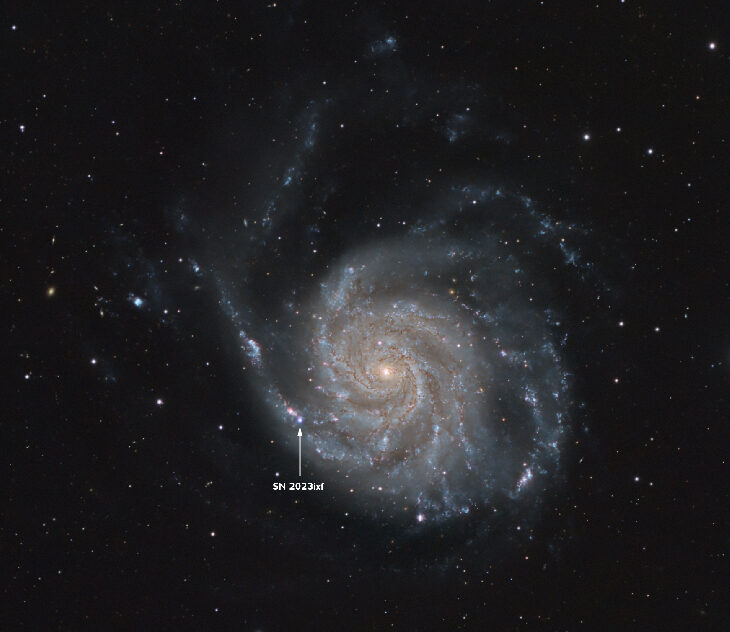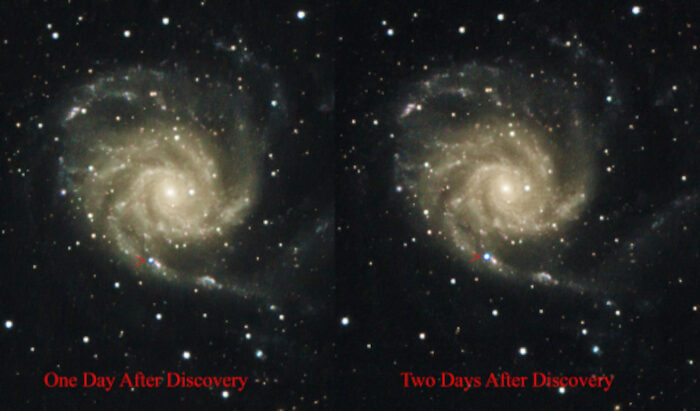At this rate, it will soon rival or outshine the spiral galaxy's core.
Astronomer Yvette Cendes of Harvard's Center for Astrophysics says the supernova should continue to brighten for another day or so. "We think it will peak around magnitude +10, although it is hard to be certain."
Discovered by amateur astronomer Koichi Itagaki on May 19th, this is a Type II supernova caused by the core collapse of a massive star. A shock wave has broken out of the dying star, creating a fireball as it plows into circumstellar material. That's what we are seeing now.

"If amateur astronomers have any data from the last few days, particularly right before discovery, it might prove useful for science and end up in some scientific papers!" says Cendes. "Sending the data to the AAVSO is probably the best way to contribute."




The advancements in astronomy due to such giddy wanting's amount to next to nothing, I question as to whether thoses who are active in such a discipline 🤣 have genuinely achieved anything of any significance.
Big Bang, Black Holes and alleged Moon landings, not much to gloat about